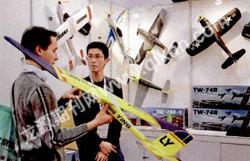Focus
Traveling in a Virtual Forbidden City
The Forbidden City: Beyond Space and Time is a virtual Forbidden City created by IBM and Chinas Palace Museum. It was launched in October on the 83rd anniversary of the Palace Museums establishment. This is the first complete virtual world created on Chinese historical and cultural heritage. Through advanced technology, attractive contents and creative interactive elements, the virtual tour opens the former imperial palace -- and hundreds of years of history and culture -- to the world. This is especially valuable to those who cannot come to Beijing and take the real tour. By clicking a mouse, visitors can get an idea of the architecture and antiques on display. Visitors can also arrange their own tour route and play palace games like weiqi. Log on to the website www.beyondspaceandtime.org to download client software, get registered and enjoy the wonderful virtual world. At present, the system offers three language versions: simplified Chinese, traditional Chinese and English.

NBA Plans to Build Arenas in China
The National Basketball Association and billionaire businessman Philip Anschutzs AEG entertainment firm plan to develop and operate at least 12 arenas in China. Construction is to be financed mainly by Chinas local governments. The arenas willprovide the basis for an NBA-branded league in China. NBA commissioner David Stern said, “China is an enormous market with enormous potential, not only for basketball but for general entertainment.” AEG now operates more than 90 major arenas worldwide, including the Lakers home arena, the Staples Center in Los Angeles and Londons O2 arena. The NBA has planned to expand operations in China for nearly 30 years, and now has 100 employees, 15 partners and 30,000 NBA brand retailers. Furthermore, there are many basketball fans in China.
Exports Make Negative Contribution to GDP Growth in 2008
Analysis and Forecast on Chinas Economy published by the Chinese Academy of Social Sciences shows that Chinas GDP growth will maintain 2008s downward trend, hopefully staying at 9.5 percent in 2009. According to the report, after five years of high-speed growth, consumption, investment and exports have all slowed. In 2008, the contribution of consumption to GDP growth was 5.05 percent, while investment was 5.35 percent. Appreciation of the RMB and the sub-prime loan crisis in the US have seen overseas demand decline, meaning exports will make a negative contribution to growth this year, shaving 0.3 percent off GDP. The end of the report states: “Declines in domestic CPI mean the price of resources will be more reasonable. Therefore, promulgating relevant financial and taxation policies will create better conditions for accelerating energy market reform.”
The Education Ministry says that the large-scale expansion of university and college enrolments since 1999 will be slowed down. The expansion rate will be no more than 4 percent in 2009, and no more than 3 percent the year after. In 1999, the government began large-scale expansion of the higher education sector. There were 1.08 million students in 1998, which shot up to 1.59 million the following year, an increase of 48 percent. By 2008, the number had reached 6 million. Although enrolment expansion has allowed more people to realize their university dream, it has affected the quality of education. Slowing down enrolment expansion is aimed at addressing this issue.

